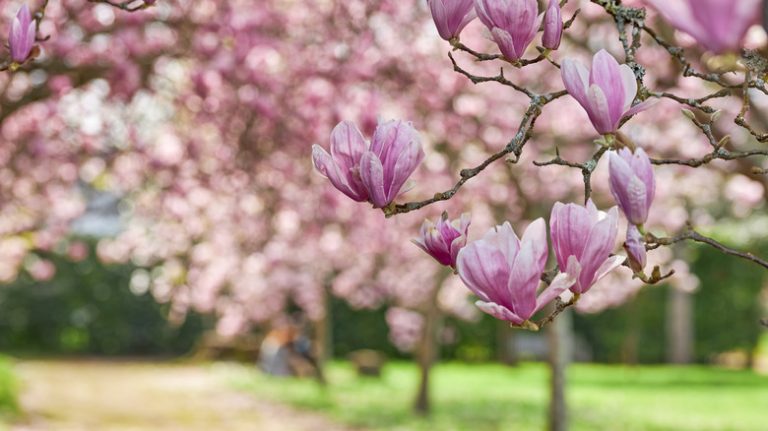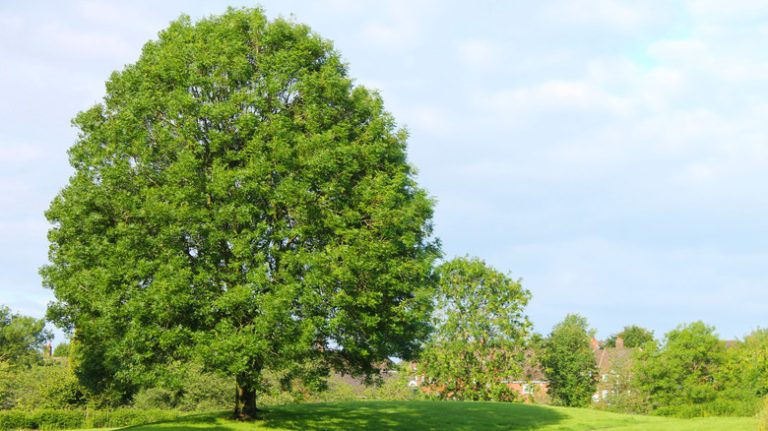Welcome to the ultimate guide on growing oakleaf hydrangea, a cone-shaped shrub that is sure to add beauty and versatility to your landscape. This guide will provide you with all the basic information you need to know for successfully growing this stunning plant. Whether you have a big yard or a small space, oakleaf hydrangea is a perfect fit for any landscape.
Oakleaf hydrangea is a versatile plant that can thrive in a variety of different conditions. It can be used as a shrub, a ground cover, or even as a cut flower. This plant is native to the United States and is known for its large, ovate leaves and beautiful, cone-shaped flower heads. With its four-season interest, oakleaf hydrangea is a must-have in any garden.
When it comes to growing oakleaf hydrangea, there are a few things to keep in mind. Oakleaf hydrangeas generally prefer well-drained soil and can tolerate a wide range of pH levels. They also prefer full to partial sun and can thrive in both hot and cold climates. However, it is important to note that oakleaf hydrangeas are deciduous plants, meaning they will lose their leaves in the winter.
If you are thinking about adding oakleaf hydrangea to your landscape, now is the perfect time to start. Oakleaf hydrangeas are primarily grown from cuttings or by propagating the shrubs. You can also find potted oakleaf hydrangea plants at your local nursery for easier transplanting. Whichever method you choose, make sure to follow the proper transplanting times and techniques to ensure the best growth and flower production.
One of the great things about oakleaf hydrangea is that it is relatively low-maintenance. To help promote healthy growth, it is recommended to apply a slow-release fertilizer in the spring. Additionally, oakleaf hydrangeas benefit from a thick layer of mulch, such as shredded leaves or wood chips, to help retain moisture and suppress weeds. Regular watering, especially during dry periods, is also important to keep the plant happy and healthy.
In conclusion, oakleaf hydrangea is a beautiful and versatile plant that can thrive in a variety of different landscapes. Whether you are looking for a stunning focal point or a reliable perennial, oakleaf hydrangea is the perfect choice. With its four-season interest, deer resistance, and stunning flower heads, you’ll find that this plant is a true star in any garden. So why not give oakleaf hydrangea a try and see how it can transform your landscape?
How to Grow and Care for Oakleaf Hydrangea
Oakleaf hydrangeas are a popular choice for gardeners who want to add beauty and interest to their landscapes. With their stunning flowers, beautiful foliage, and hardy nature, they are a great addition to any garden.
When it comes to caring for oakleaf hydrangeas, experience has shown that they are relatively low-maintenance plants. They are known to be quite hardy and can tolerate a wide range of conditions. This makes them an excellent choice for gardeners of all skill levels.
There are several common varieties of oakleaf hydrangeas, each with its own unique characteristics. While they all share similar care requirements, it’s important to choose the right variety for your specific needs.
Oakleaf hydrangeas are versatile plants that can be used in a variety of ways in the garden. They make great specimen plants, providing a focal point with their stunning blooms. They can also be used as a backdrop for other perennials, or as a privacy screen when planted together in a row.
When it comes to growing oakleaf hydrangeas, they prefer well-drained soil. It’s important to choose a site with good drainage to prevent waterlogged roots. They also prefer full or partial sun and thrive in zones 5-9.
Before planting, it’s a good idea to prepare the soil to ensure the best growing conditions for your oakleaf hydrangeas. This can be done by adding organic matter, such as compost or well-rotted manure, to improve soil structure and fertility.
Once planted, oakleaf hydrangeas should be watered thoroughly. It’s important to keep the soil evenly moist, but not waterlogged. Mulching around the base of the plant can help retain moisture and suppress weeds.
Oakleaf hydrangeas require about 4-6 hours of direct sunlight each day to promote healthy growth and abundant blooming. They also prefer high humidity, so it’s a good idea to mist the leaves with water on hot, dry days.
Pruning is generally not necessary for oakleaf hydrangeas, but if needed, it’s best done immediately after blooming. This will give the plant enough time to establish new growth before the next growing season begins.
In conclusion, oakleaf hydrangeas are a beautiful and versatile plant that can add interest and color to any garden. With a wide range of varieties to choose from, there is sure to be one that suits your needs. By following the care guidelines and providing the right growing conditions, you can enjoy the beauty of oakleaf hydrangeas for many years to come.
Source: “Oakleaf Hydrangea – The Ultimate Growing Guide from Proven Winners®.” Cathy Durham, Proven Winners®.
Oakleaf Hydrangea Care
When it comes to caring for Oakleaf Hydrangeas, there are a few key things to keep in mind. These flowering shrubs are always a beautiful addition to any garden, providing stunning blooms and vibrant leaf colors throughout the year. If you’re looking for a low-maintenance plant that can thrive in a variety of conditions, the Oakleaf Hydrangea is a great choice.
Similar to other Hydrangea species, Oakleaf Hydrangeas prefer a location where they can receive morning sun and afternoon shade. They can tolerate full sun, but too much direct sunlight can cause leaf burn and flower damage. Finding the right balance of sun and shade is essential for their overall health and well-being.
When it comes to soil, Oakleaf Hydrangeas are not too picky. They can thrive in a variety of soil types, as long as it has good drainage. However, they do prefer slightly acidic soil with a pH between 5.2 and 6.5. Adding organic matter to the soil, such as compost or mulch, can help improve its moisture retention and overall health.
In terms of watering, Oakleaf Hydrangeas are more drought-tolerant than other Hydrangea species. They can withstand short periods of drought, but they prefer consistent moisture. Water deeply and regularly, especially during dry spells, to ensure their roots have access to the moisture they need.
When it comes to pruning, Oakleaf Hydrangeas are quite versatile. They can be pruned in late winter or early spring before new growth emerges. Pruning is generally done to remove dead or damaged wood, promote airflow, and maintain a desired shape and size. However, minimal pruning is usually required, as these shrubs have a naturally attractive and well-formed growth habit.
Caring for Oakleaf Hydrangeas also involves keeping an eye out for common insects and diseases. Aphids and leaf spot are common issues that can affect the health of these plants. Regularly inspect the leaves and stems for any signs of damage or infestation. If necessary, treat with an appropriate insecticide or fungicide to keep these problems at bay.
One of the great things about Oakleaf Hydrangeas is that they are a four-season plant. In addition to their stunning flowers, they offer beautiful fall foliage, winter interest with their woody stems, and even provide shelter and food for songbirds. These shrubs make excellent companion plants and can enhance the overall beauty and biodiversity of your garden.
So, if you’re looking for a beautiful and low-maintenance shrub that can thrive in a wide range of conditions, the Oakleaf Hydrangea is the perfect choice. With its versatile care requirements and stunning features, it’s sure to be a standout in your garden.
Light
Oakleaf hydrangea requires at least 4-6 hours of direct sunlight per day to thrive. However, it can also tolerate some shade, especially in hot climates. Too much shade may result in fewer flowers and a more open, loose habit.
When choosing a spot for your Oakleaf hydrangea, look for a place with well-drained soil and good air circulation. Avoid areas with excessive moisture, as this can cause root rot and other problems. It is also important to note that Oakleaf hydrangeas prefer acidic soil with a pH between 5.0 and 6.5.
During the growing season, it is important to water your Oakleaf hydrangea thoroughly, especially during hot and dry periods. This will help establish the roots and promote healthy growth. After the plant is established, it is generally considered to be drought-tolerant, but regular watering during prolonged dry spells is always beneficial. Adding a layer of mulch around the base of the plant will help retain moisture and regulate soil temperature.
Pruning Oakleaf hydrangeas is generally not necessary, as they have a naturally attractive shape. However, if you want to control the size or remove dead or damaged wood, prune immediately after flowering. This will give the plant ample time to develop new growth and set buds for the following year.
Oakleaf hydrangeas are generally pest and disease-resistant, but they may occasionally experience problems with powdery mildew, leaf spot, or aphids. Regularly inspecting the plant for signs of damage and promptly addressing any issues that arise will help keep your Oakleaf hydrangea healthy and thriving. If pests become a recurring problem, consult a local garden center or extension office for advice on treatment options.
Oakleaf hydrangeas are versatile and easy-care shrubs that can add beauty and interest to any garden. With their long-lasting blooms, attractive foliage, and ability to thrive in a variety of light conditions, they are a favorite among gardeners of all experience levels.
By providing the right light conditions and caring for your Oakleaf hydrangea, you can enjoy its beauty and benefits in your garden for many years to come.
Soil
When it comes to growing Oakleaf Hydrangeas, the type of soil you choose is crucial to their success. These plants thrive in rich, well-draining soil that is slightly acidic.
You’ll want to avoid heavy clay soil, as it can become compacted and hinder root growth. Instead, opt for a loamy soil that is light and airy. If your soil is heavy clay, you can amend it with compost or peat moss to improve its texture.
Before planting your Oakleaf Hydrangea, it’s a good idea to test your soil pH. Ideally, the pH of the soil should be between 5.5 and 6.5 for optimal growth. If your soil is too alkaline, you can lower the pH by adding elemental sulfur or aluminum sulfate.
When it comes to fertilizer, Oakleaf Hydrangeas don’t require much. In fact, too much fertilizer can lead to lush foliage but fewer flowers. A slow-release, balanced fertilizer applied in early spring is usually sufficient. Be sure to follow the manufacturer’s instructions for application rates.
Water is essential for the successful growth of Oakleaf Hydrangeas. During the first growing season, be sure to keep the soil evenly moist but not waterlogged. Once established, these plants are quite drought-tolerant, but they will perform best when watered regularly, especially during hot, dry periods.
Transplanting Oakleaf Hydrangeas is best done in early spring or early fall. When moving a mature plant, dig a hole that is at least twice the width of the plant’s root ball. Place the plant in the hole and backfill with a mixture of native soil and compost. Water thoroughly after transplanting to help settle the soil.
Proper mulching is another important factor in caring for your Oakleaf Hydrangeas. Apply a 2- to 3-inch layer of mulch, such as shredded leaves or wood chips, around the base of the plant. This will help retain moisture, suppress weeds, and insulate the roots from extreme temperatures.
Oakleaf Hydrangeas are versatile plants that can thrive in a variety of landscapes. They can tolerate full sun but will perform best in partial shade, especially in hot climates. Morning sun and afternoon shade are ideal. They can also tolerate a range of humidity levels from dry to humid.
These deciduous plants are known for their large, ovate leaves that turn shades of wine-red in the fall. In colder zones, the leaves may persist on the plant throughout the winter months.
When it comes to pruning Oakleaf Hydrangeas, minimal pruning is required. Prune any dead or damaged wood in early spring, and you can also remove any crossed or rubbing branches. If you want to shape the plant, do so after it has finished flowering. Removing spent flowers can also encourage additional blooms.
Oakleaf Hydrangeas are relatively pest-free, but they can attract smaller pests, such as aphids or spider mites. Keep an eye out for any signs of infestation and treat accordingly. Applying an insecticidal soap or a strong stream of water can help control these pests.
In conclusion, the soil you choose for your Oakleaf Hydrangeas is crucial to their ultimate growing success. By providing them with the right soil conditions, proper watering, and minimal care, you’ll experience beautiful and healthy plants that will thrive for many years to come.



